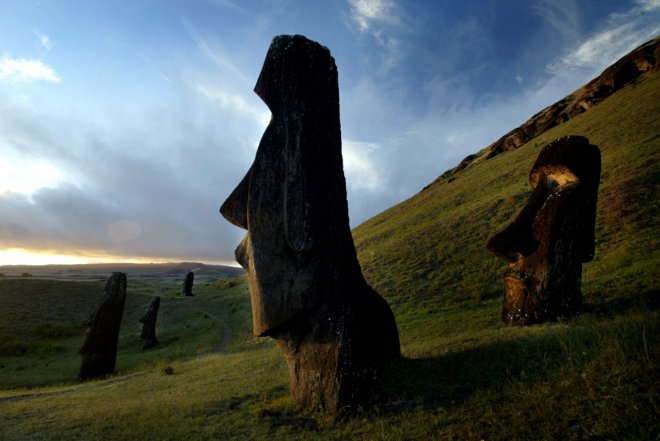
A recent DNA analysis of the inhabitants of the Eastern Island or the Rapa Nui leads to more mysterious questions about the early settlers of the island.
The isolated island, which has become famous for its 900 gigantic statues, lies at a distance of 2,300 miles (3,700 km) from the western tip of Chile. The 64 square miles island also has a distance of 1,100 miles (1,770 Km) from its nearest island.
A study published in the Current Biology Journal states that isolation made the Rapa Nui people into two unique races which didn't have any contacts with their neighbouring South Americans. Studies on DNA samples between the 1400s, 1500s and 1800s, on these islands, have proved there wasn't any mingling with the South Americans.
However, a genetic study in 2014 had indicated that inbreeding between islanders and Americans occurred between 1300 and 1500.
Cat James, archaeologist at the University of Bristol in Britain, said, "Our study shows that there is no simple scenario of population exchange and migration between Rupa Nui and the Americas as suggested by many archaeologists, historians, population geneticists and even adventurers."
There were two groups of people present on the island when the first European ship of Dutch explores reached in 1722. The ethnic group's short ears and long ears were said to be engaged in a civil war when the Dutch explorers reached there. They named the island as Paaseiland or the Eastern Island, honoring the day they reached there.
Spanish Viceroy of Peru also sent an expedition group in 1770 who counted the number of islanders as 3000. Their numbers had significantly decreased to 111 by 1877 because of the civil war and spreading of smallpox. The smallpox virus was brought to the island by the European explorers and the slaves from Peru.
The Eastern Island is presently under the Government of Chile. Tourism has flourished into an industry and Spanish has turned to be a common language. Descendants of the Polynesian ancestry and the long ears and the short ears presently live on the island.









